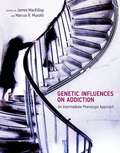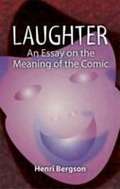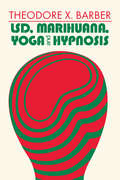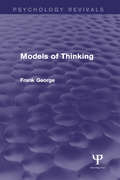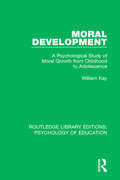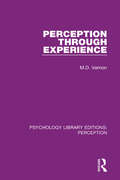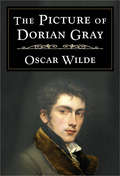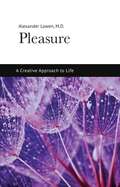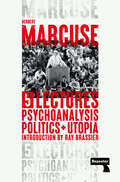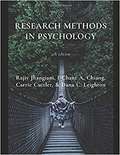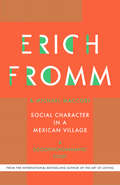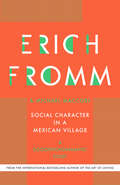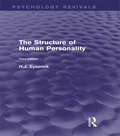- Table View
- List View
Genetic Influences on Addiction
by James MackillopAlthough there is scientific consensus that genetic factors play a substantial rolein an individual's vulnerability to drug or alcohol addiction, specific genetic variables linked torisk or resilience remain elusive. Understanding how genetic factors contribute to addiction mayrequire focusing on intermediary mechanisms, or intermediate phenotypes, that connect geneticvariation and risk for addiction. This book offers a comprehensive review of thismechanistic-centered approach and the most promising intermediate phenotypes identified in empiricalresearch. The contributors first consider the most established findings in thefield, including variability in drug metabolism, brain electrophysiological profiles, and subjectivereactions to direct drug effects; they go on to review highly promising areas such as expectancies,attentional processing, and behavioral economic variables; and finally, they investigate moreexploratory approaches, including the differential susceptibility hypothesis and epigeneticmodifications. Taken together, the chapters offer a macro-level testing of the hypothesis that thesealternative, mechanistic phenotypes can advance the understanding of genetic influences onaddiction. The book will be of interest to researchers and practitioners in a range of disciplines,including behavioral genetics, psychology, pharmacology, neuroscience, andsociology. Contributors: John Acker, Steven R. H. Beach, Gene H. Brody, Angela D. Bryan, Megan J. Chenoweth, Danielle M. Dick, Eske D. Derks, Mary-Anne Enoch, Meg Gerrard, FrederickX. Gibbons, Thomas E. Gladwin, Mark S. Goldman, Marcus Heilig, Kent E. Hutchison, Hollis C. Karoly,Steven M. Kogan, Man Kit Lei, Susan Luczak, James MacKillop, Renee E. Magnan, Leah M. Mayo, MarcusR. Munafò, Daria Orlowska, Abraham A. Palmer, Danielle Pandika, Clarissa C. Parker, Robert A. Philibert, Lara A. Ray, Richard R. Reich, Ronald L. Simons, Courtney J. Stevens, Rachel E. Thayer,Rachel F. Tyndale, Tamara L. Wall, Reinout W. Wiers, Michael Windle, Harriet de Wit
Laughter: An Essay on the Meaning of the Comic
by Henri BergsonIn this great philosophical essay, Henri Bergson explores why people laugh and what laughter means. Written at the turn of the twentieth century, Laughter explores what it is in language that makes a joke funny and what it is in us that makes us laugh. One of the functions of humor, according to Bergson, is to help us retain our humanity during an age of mechanization. Like other philosophers, novelists, poets, and humorists of his era, Bergson was concerned with the duality of man and machine. His belief in life as a vital impulse, indefinable by reason alone, informs his perception of comedy as the relief we experience upon distancing ourselves from the mechanistic and materialistic. "A situation is always comic," Bergson notes, "if it participates simultaneously in two series of events which are absolutely independent of each other, and if it can be interpreted in two quite different meanings. " The philosopher's thought-provoking insights (e. g. , "It seems that laughter needs an echo. Our laughter is always the laughter of a group. ") keep this work ever-relevant as a thesis on the principles of humor.
LSD, Marihuana, Yoga, and Hypnosis
by Theodore X. BarberThe practice of yoga, hypnosis, and the use of psychedelic drugs to alter psychological and physiological states is not unknown to the study of psychology. They have been called "soft" studies and labeled unimportant. This is mostly because they are difficult to study and understand, often focusing on unobservable internal states such as altered states of consciousness, Samadhi, or hypnotic states. This book, in its approach to thinking about this topic and method for analysis, focuses only on phenomena that can be observed, such as behavioral changes.By centering on only those aspects of the psychological and physiological effects of yoga, hypnosis, and psychedelic drugs which can be measured and analyzed using this new method, Barber distinguishes this book from others in the field. He asks what overt behaviors and verbal reports are clearly observable when psychedelic drugs are taken, yoga is practiced, or hypnotic-induction procedures are administered. Instead of treating the phenomena traditionally associated with psychedelic drugs, yoga, or hypnosis as undifferentiated conglomerates, an attempt will be made to set apart and treat separately each of the many phenomena associated with each of these areas of inquiry.This book does not set out to simply demonstrate the importance of psychedelics, yoga, and hypnosis, or to present substantive material pertaining to these topics. It also treats each topic as continuous with other known psychological phenomena and as an important piece to the puzzle of social psychology. It differs from most previous treatises in that it does not assume that psychedelics, yoga, and hypnosis can bring out unused mental or physical capacities in man, heighten awareness or give rise to enhanced creativity, or produce altered states of consciousness, suspension of conventional reality-orientation, changes in body-image, or changes in perception.
Malignant Self Love
by Samuel VakninThe first ever book about narcissistic abuse, Malignant Self-love: Narcissism Revisited offers a detailed, first hand account of what it is like to have Narcissistic Personality Disorder. It contains new insights and an organized methodological framework. The first part of the book comprises more than 100 Frequently Asked Questions (FAQs) regarding relationships with abusive narcissists and the Narcissistic Personality Disorder.
Mental Health: Culture, Race and Ethnicity
by US Department of Health and Human ServicesA supplement to Mental Health: A Report of the Surgeon General. Cross-cultural comparisons of blacks, North American Indians, Asian-Americans, Hispanic Americans, and whites.
Models of Thinking (Psychology Revivals #Vol. 1)
by Frank H. GeorgeIn this volume, originally published in 1970, an attempt is made to examine the more logical aspects of thinking, such as the ability to abstract and the manner in which concepts develop. The author describes the features that had long been regarded as central to thinking by experimental and theoretical psychologists of the time and he places more emphasis on the part played by language in cognitive activity. In the second part the author points out how such basic features of thinking as concept and hypothesis formation, inference making and the use of ordinary English are essentially things that can be carried out by a computer. His use of theories and his methods of modelling the human brain and the way it works comprise an intriguing and highly sophisticated attempt to provide an appropriate framework in which problems of thinking can be studied. Professor George was the author of several books, the best known of which at the time were The Brain as a Computer and Cybernetics and Biology. His writings covered many aspects of psychology, philosophy and logic, as well as cybernetics. At the time of original publication he was Professor of Cybernetics at Brunel University and Chairman of the Bureau of Information Science.
Moral Development: A Psychological Study of Moral Growth from Childhood to Adolescence (Routledge Library Editions: Psychology of Education)
by William KayAlthough the work of Piaget dealt with the intellectual development of children, and that of Goldman with a child’s religious thought, there had hitherto been no comparable book on child morality to complete the developmental picture of the time. Originally published in 1968 William Kay’s book was designed to fill this gap, for he offers a complete description of the moral growth of children from infancy to adolescence. Dr Kay was writing specifically for students and practising teachers and carefully avoids specialist jargon where ordinary terms suffice. He concludes that the findings of research into attitude formation and change could provide teachers with those techniques to help their pupils become morally mature members of society. His book contains a valuable analysis of the development of ideas concerning moral growth, and is a bold contribution to the problems of moral education.
Pathological Lying, Accusation, and Swindling: A Study in Forensic Psychology
by William Healy Mary HealyPerception Through Experience (Psychology Library Editions: Perception #30)
by M.D. VernonThe term ‘visual perception’ covers a very wide range of psychological functions. This title, originally published in 1970, which provides a broad survey of this vast field of knowledge, would have proved a valuable general account for students taking degree courses in psychology at the time. Professor Vernon examines a large number of experiments carried out over the previous twenty years, their findings, the conclusions drawn from them, and – equally important – the still unanswered questions which some of them raised. As the title suggests, Professor Vernon considers that – while much knowledge of the simpler perceptual processes had been gained in laboratory experiments – perhaps too little investigation had been undertaken into the more complex processes which normally determine understanding of and response to environment: the processes of identification and classification that depend to a considerable extent on learning, memory, attention, reasoning and language. An extensive bibliography is provided.
The Picture of Dorian Gray
by Oscar WildeOscar Wilde's only novel. Dorian Gray sells his soul in a bid to maintain eternal youth and beauty. Only his portrait will age. As with all such bargains, however, there will be a reckoning.
Pleasure: A Creative Approach to Life
by Alexander LowenIn Pleasure: A Creative Approach to Life, Alexander Lowen shows how the experience of pleasure or pain determines our emotions, thinking, and behavior. Lowen views the body as the outer manifestation of the spirit and defines grace as the divine spirit acting within the body. For the healthy individual the divine spirit is experienced as the natural gracefulness of the body and is reflected in the person's behavior. In a healthy body, movement, feeling, and thinking are integrated in grace and harmony. This book includes body-psychotherapy techniques and exercises aimed at alleviating muscular tension and restoring the body's natural grace. This spiritual grace involves a sense of connectedness to a higher order. In this state of grace we feel a kinship with all living creatures, and recognize our connection to our environment and to the world.
Principles of Social Pyschology: [Removed at request of original publisher]
by [Author removed at request of original publisher]This textbook is based on a critical thinking approach, and its aim is to get students thinking actively and conceptually – with a greater focus on the forest than the trees. Yes, there are right and wrong answers, but the answers are not the only thing. What is perhaps even more important is how students get to the answers – the thinking process itself. To help students better grasp the big picture of social psychology, this text has a consistent pedagogy across the chapters. For questions about this textbook please contact textbookuse@umn.edu
Psychoanalysis, Politics, and Utopia: Five Lectures
by Herbert MarcuseAn impassioned plea for overcoming capitalism, whose urgency is more timely today than when it was first published fifty years ago.Back in print after fifty years and with a new introduction by Ray Brassier, this often overlooked but prescient collection of Marcuse's lectures makes an impassioned plea for the overthrowing of capitalism.Analysing the work of Freud and Marx, and taking in topics like automation, work, postcapitalism, utopia, and technology, Psychoanalysis, Politics, and Utopia excavates the psychic roots of the current crisis of capitalist civilisation, and gives us a blueprint for the emancipation of humanity from the toils of capitalism.In a world reeling from the ongoing collapse of the neoliberal consensus, coupled with the accelerating pace of catastrophic climate change wrought by capitalism, Marcuse&’s radical insights in Psychoanalysis, Politics, and Utopia are as urgently relevant today as they were in 1970.
Research Methods In Psychology
by Rajiv S. Jhangiani I-Chant A. Chiang Carrie Cuttler Dana C. LeightonA comprehensive textbook for research methods classes. A peer-reviewed inter-institutional project. This adaptation constitutes the fourth edition of this textbook, and builds upon the second Canadian edition by Rajiv S. Jhangiani (Kwantlen Polytechnic University) and I-Chant A. Chiang (Quest University Canada), the second American edition by Dana C. Leighton (Texas A&M University-Texarkana), and the third American edition by Carrie Cuttler (Washington State University) and feedback from several peer reviewers coordinated by the Rebus Community. This edition is licensed under a Creative Commons Attribution-NonCommercial-ShareAlike 4.0 International License.
Social Character in a Mexican Village
by Erich Fromm Michael MaccobyThe renowned psychoanalyst Erich Fromm not only analyzed society and societal processes. Together with Michael Maccoby he did a study of Mexican peasants to empirically illustrate how historical, economic and social requirements determine behavior. Social Character in a Mexican Village does much more than introduce a new approach to the analysis of social phenomena. It throws new light on one of the world's most pressing problems, the impact of the industrialized world on the traditional character of peasants. Unanimously the book is an outstanding introduction to Fromm's concept of social character.
Social Character in a Mexican Village: A Sociopsychoanalytic Study
by Erich Fromm&“[A] groundbreaking study combining psychoanalytical and anthropological methods to analyse the impact of industrialization on &‘peasants.&’&” —Booknews The renowned psychoanalyst Erich Fromm analyzed more than just general society and societal processes. Together with Michael Maccoby, he completed a study of Mexican villagers to empirically illustrate how historical, economic, and social requirements determine behavior.Social Character in a Mexican Village does much more than introduce a new approach to the analysis of social phenomena. It throws new light on one of the world&’s most pressing problems, the impact of the industrialized world on the traditional character of the laboring class. Unanimously, the book is an outstanding introduction to Fromm&’s concept of social character. &“Fromm and Maccoby have written a study of crucial importance.&” —Richard J. Barnet, Institute for Policy Studies
The Structure of Human Personality (Psychology Revivals)
by H.J. EysenckOriginally published in 1953, this third edition was first published in 1970. It was one of the early attempts at bringing together theories of personality organisation and finding empirical evidence to test their hypotheses. This third edition includes additional chapters and updated references to current research of the time. It is a particular feature of this book that a large number of figures are reproduced in the text; this is essentially a consequence of the writer’s belief that diagrammatic representations are better suited to the transmitting and remembering of information than are words or numbers. The first chapter outlines the theories and discusses some of their implications, the second and third look at methods of analysis and projective techniques, while the rest of the book is devoted to a critical presentation of the evidence, arranged according to the technique employed – rating, self-rating, objective testing, constitutional assessment, autonomic measurement, and so on. Today it can be read and enjoyed in its historical context.

